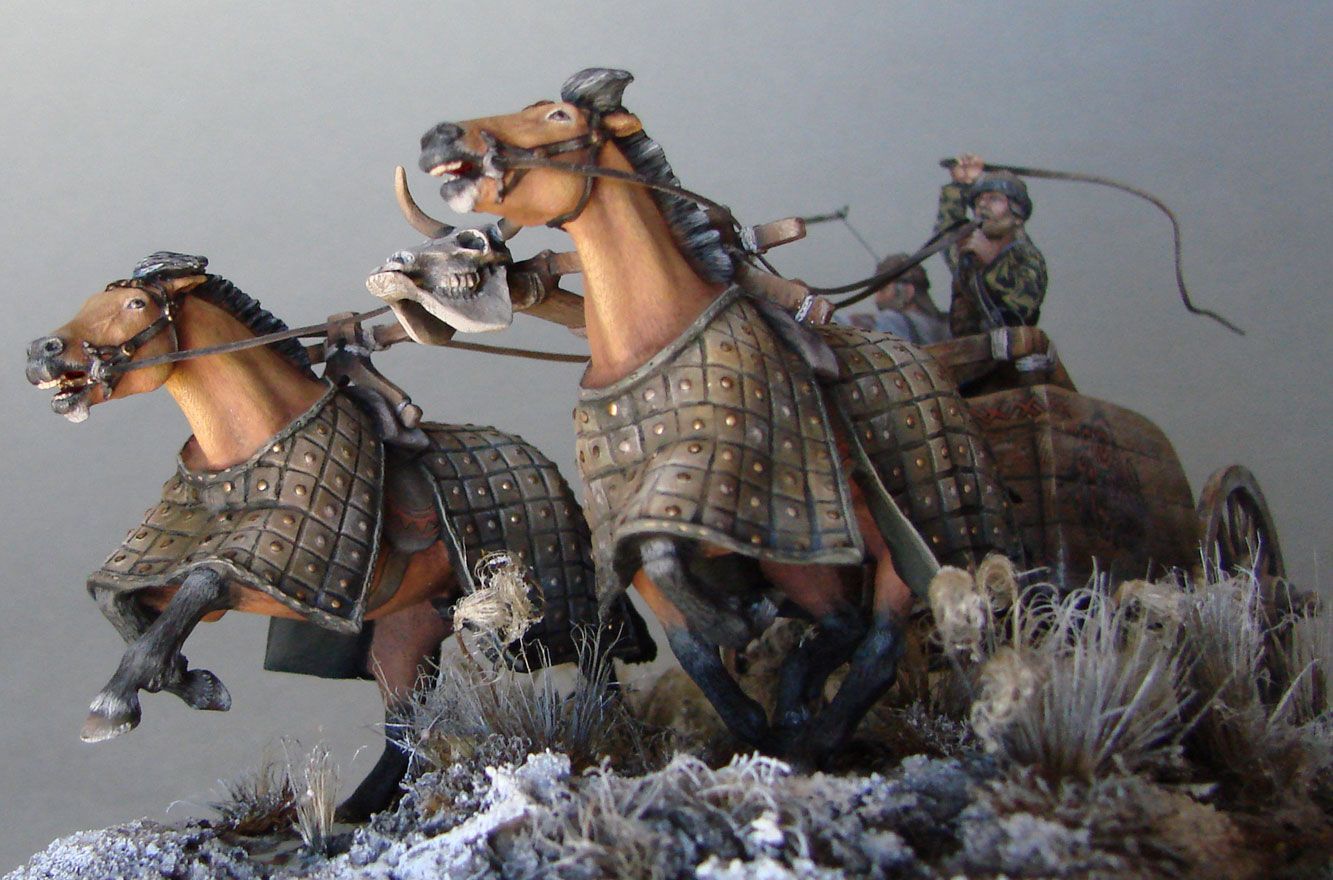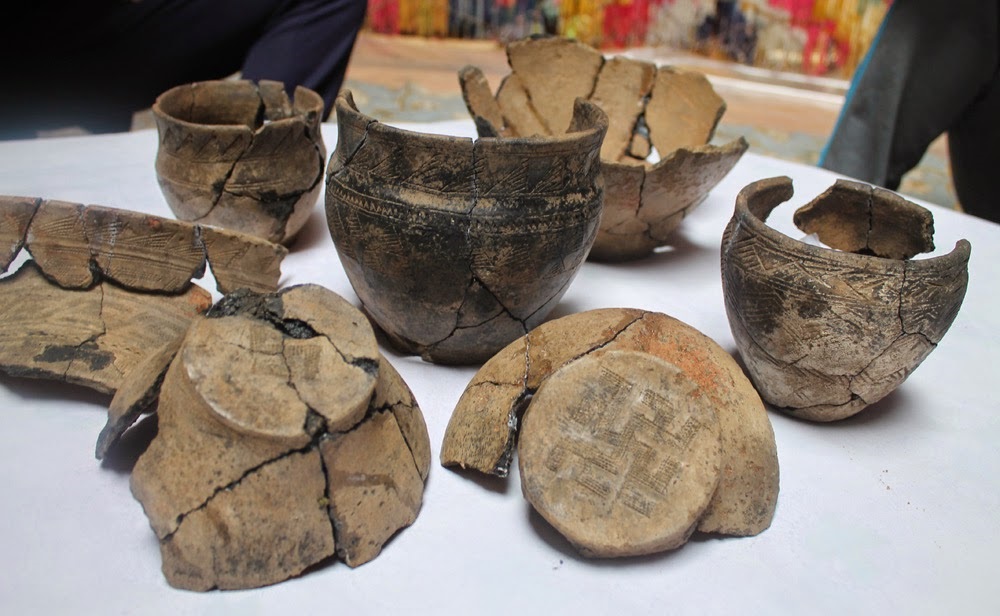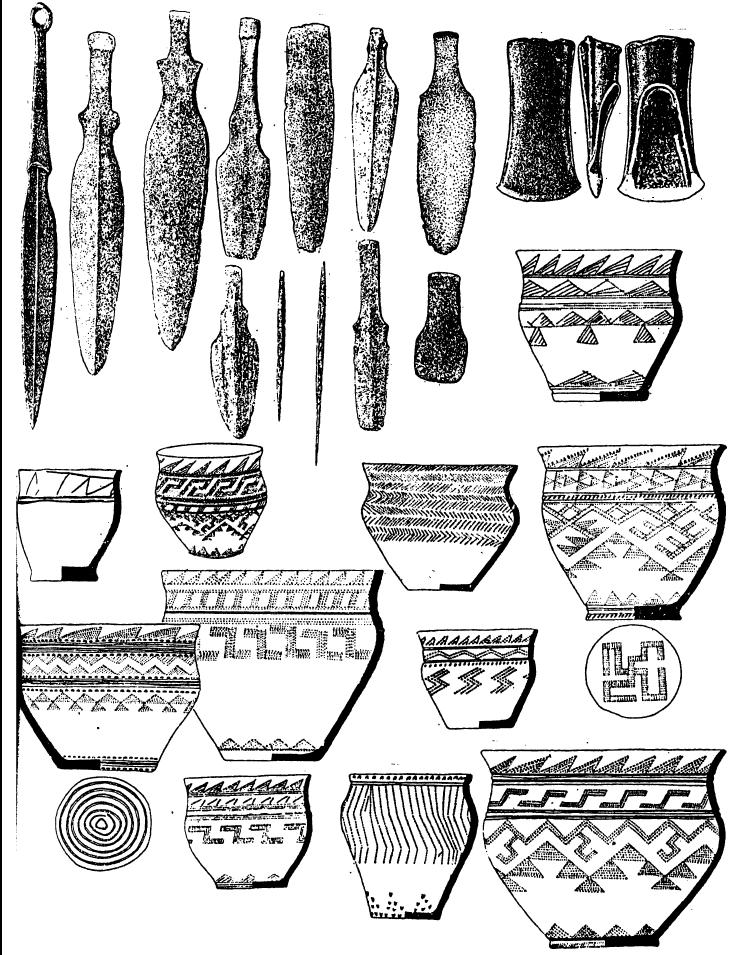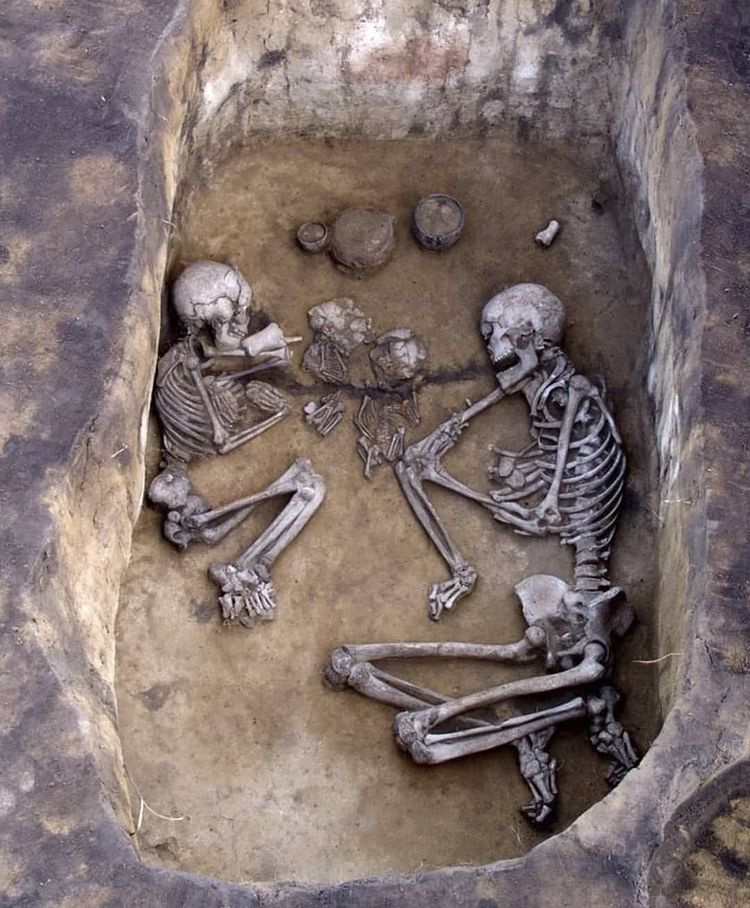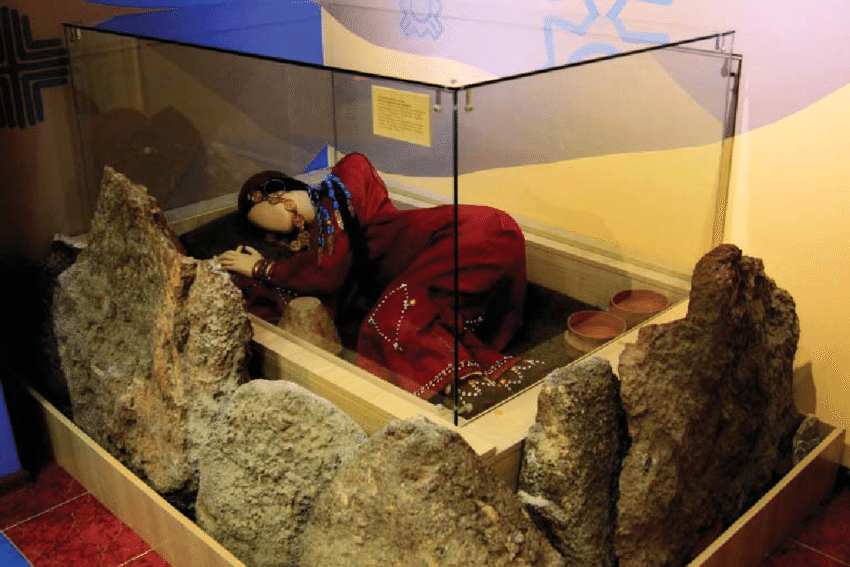Andronovo Culture
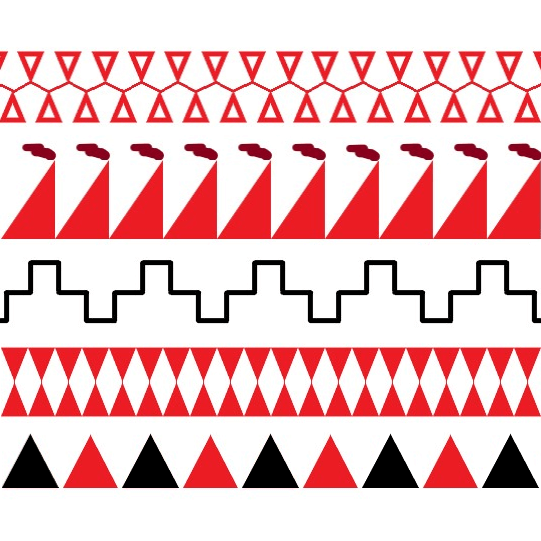
This culture existed from 2000 BC to 900 BC in Western Siberia and Central Asian Steppe. The older Sintashta Culture was its predecessor. Most researchers associate the Andronovo horizon with early Indo-Iranian languages, though it may have overlapped the early Uralic-speaking area at its Northern fringe.
According to a genetic study conducted by Allentoft et al. in 2015, the Andronovo Culture and the preceding Sintashta Culture are partially derived from the Corded Ware Culture, given the higher proportion of ancestry matching the earlier Neolithic Farmers from Europe, similar to the admixture found in the genomes of the Corded Ware population.
The Andronovo Culture consisted of both communities that were largely mobile as well as those settled in small villages. Fortifications include ditches, earthen banks as well as timber palisades, of which an estimated twenty have been discovered. Andronovo villages typically contain around two to twenty houses, but settlements containing as much as hundred houses have been discovered. Andronovo houses were generally constructed from pine, cedar, or birch, and were usually aligned overlooking the banks of rivers.
Andronovo livestock included cattle, horses, sheep, goats and camels. The domestic pig is notably absent, which is typical of a mobile economy. The percentage of cattle among Andronovo remains are significantly higher than among their Western neighbours from the Srubna Culture. The horse was represented on Andronovo sites and was used for both riding and traction. Agriculture also played an important role in the Andronovo economy.
The Andronovo Culture is notable for regional advances in metallurgy. They mined deposits of copper ore in the Altai Mountains from around the 14th century BC. Bronze objects were numerous, and workshops existed for working copper.
💀 The Andronovo dead were buried in timber or stone chambers under both round and rectangular kurgans (tumuli). Burials were accompanied by livestock, wheeled vehicles, cheek-pieces for horses, weapons, ceramics and ornaments. Among the most notable remains are the burials of chariots, dating from around 2000 BC and possibly earlier. The chariots are found with paired horse-teams, and the ritual burial of the horse in a "head and hooves" cult has also been found. Some Andronovo dead were buried in pairs, of adults or adult and a child. 💀
Gallery Of Artifacts
DNA
Y-DNA extracted from one individual was determined to belong to Y-DNA haplogroup C (but not the C3 subclade), while the other two extractions were determined to belong to Y-DNA haplogroup R1a1a, which is thought to mark the Eastward migration of the early Indo-Europeans. Of the individuals surveyed, only two (22%) were determined to be Mongoloid, while seven (78%) were determined to be Caucasoid, with the majority being light skinned (SLC24A5 gene) with predominantly light-eyes and light-hair.
In June 2015 another genetic study surveyed one additional male of the Andronovo Culture. Extraction of Y-DNA from this individual was determined to belong to R1a1a1b2a2 (R1a-Z93, clade R1a-Z2121). A 2018 study by Narasimhan et al. examined genetic data from several individuals belonging to the Andronovo Culture. They were found to be genetically related to earlier Bronze Age populations of the Pontic-Caspian steppe (called by the authors Steppe_EMBA and meaning Early-Middle Bronze Age Steppe). In addition, they harbored ancestry from European Middle Neolithic Farmer populations. Narasimhan et al. used the label Steppe_MLBA (Middle-Late Bronze Age) for this relatively homogeneous population spread across a vast region of Eastern Europe and Central Asia during 2000 BC – 1400 BC. Most male individuals examined belonged to the Y chromosome haplogroup R1a-Z645 (R1a-M417), especially its R1a-Z93 subclade.
Most of the Tarim Mummies from the neighbouring Xiahoe Culture (to the East of Andronovo Culture) belonged to the same R1a1a Y-DNA haplogroup (still without tested deeper subclades for R1a-Z93)[2]. A study from 2021 by Zhang et al. proved that the Early Bronze Age Tarim Mummies carried 72% of their autosomal DNA from the Ancient North Eurasian population just like the Eastern European Hunter-Gatherers did[3].
The Allentoft et al. study from 2015 also confirmed that the Tarim Mummies were genetically closer to people from the Andronovo Culture (Corded Ware and Fatyanovo-Balanovo descended) rather than to people from the Afanasievo Culture (purely Southern Yamna descended). Tarim Mummies from Xiaohe Culture carried a wide variety of maternal lineages (mtDNA), including West Eurasian lineages: H, K, U5, U7, U2e, T, R* (same as those found in the Corded Ware and Fatyanovo-Balanovo cultures) and East Eurasian lineages: B, C4, C5, D, G2a (ANE and Northern Siberia) and one Indian lineage: M5[4].
Rig Veda and Avesta
Comparisons between the archaeological evidence of the Andronovo and textual evidence of Indo-Iranians (the Vedas and the Avesta) are frequently made to support the Indo-Iranian identity of the Andronovo. The modern explanations for the Indo-Iranianization of Greater Iran and the Indian subcontinent rely heavily on the supposition that the Andronovo expanded Southwards into Central Asia or at least achieved linguistic dominance across the Bronze Age urban centres of the region, such as the Bactria–Margiana Archaeological Complex. While the earliest phases of the Andronovo Culture are regarded as co-ordinate with the late period of Indo-Iranian linguistic unity, it is likely that in the later period they constituted a branch of the Iranians. This is also the ancestral culture of Scythians and Cimmerians.
Andronovo Culture used most of the words from the WORDS section because this culture is literally the Indo-European Connection.
Article updated on the 29th of October 2021 with new ancient DNA studies.

